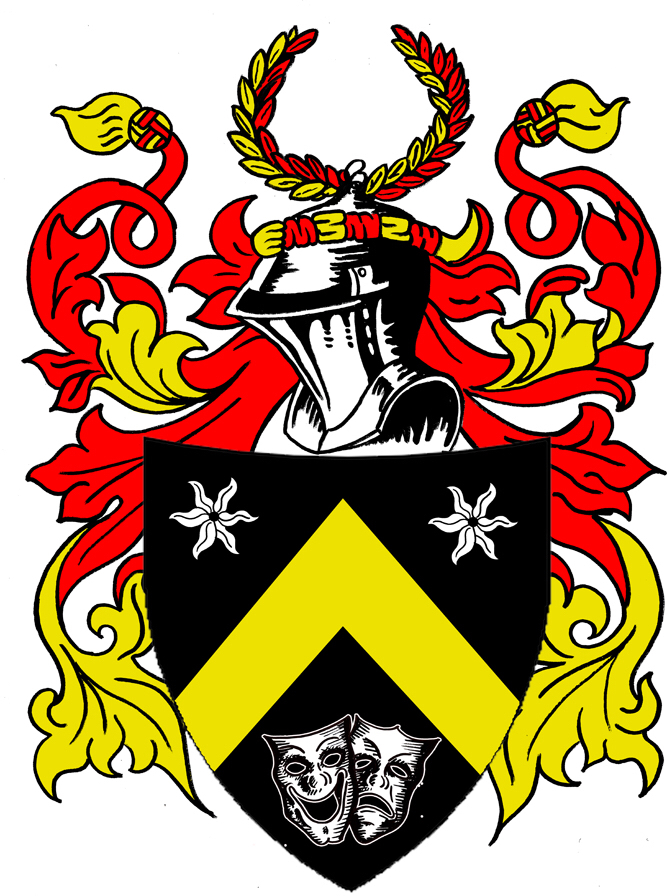Information
-
Document No.
-
Theatre Inspection Checklist
-
Client / Site
-
Conducted on
-
Prepared by
-
Location
-
Personnel
-
Inspection Focus Visit 2 Venue walk around Accident reports and Investigations Emergency Planning / Fire COSHH Training
Responsible Manager
Address
-
Add location
-
Date of Visit
Employee / Visitor specific needs (wheelchair users, sensory impairment etc)
Walk around Observations
-
Observation 1
-
Observation 2
-
Observation 3
-
Observation 4
-
Observation 5
-
Observation 6
-
Observation 7
-
Observation 8
-
Observation 9
-
Observation 10
-
Observation 11
-
Observation 12
-
Observation 13
-
Observation 14
-
Observation 15
Accident Reporting
-
48. Are records available?
RIDDOR (if applicable)
-
49. Was the incident reported in a timely manner?
-
50. Was the incident investigated?
-
51. Were actions completed?
Previous Inspection Actions
-
52. Are all outstanding actions from last quarter completed?
Fire Safety
-
53. Has a Fire Risk Assessment been carried out?
-
Give date:
-
54. Is there a Fire Log Book on site and completed?
-
Give date of last entry: Each site must have a Fire Risk Assessment and ensure it is reviewed at least annually and if there are any significant changes to the structure, work processes or types of substance held on site or if there is an incident. This will be done in collaboration between the Theatre Management and the appointed Fire Risk Assessor in line with guidance contained within the Regulatory Reform (Fire Safety) 2005.
-
55. Are all outstanding issues following the Fire Risk Assessment completed?
-
56. Are there local fire and emergency arrangements on site?
-
Give date of last review:
-
57. Where relevant, has a fire drill been carried out within the last 7 months?
-
Guidance:
A fire evacuation drill must be carried out every 6 months.
The drills must include all staff and users of the theatre therefore arrangements must be made for production staff.
The drills will also include consideration for individual evacuation plans (e.g. Disabled) -
What is the evacuation plan here?
-
58. Were there any actions from the last evacuation?
-
Give date of last evacuation
-
60. Is the area free from obvious fire hazards (e.g. Build up of rubbish, arson, smoking, flammable materials)?
-
61. Are all the extinguishers securely fitted to the walls?
-
62. Is there a fire blanket in the public kitchen area?
-
63. Are all the emergency light fittings free from defects (e.g. Bulbs working)?
-
64. Are all the fire doors undamaged, fitted correctly and close tightly?
-
Guidance:
Fire doors must always be able to open freely. Check for obstructions inside and outside of final exits as well as internal fire routes.
Any door that is classed as a means of escape MUST be unlocked when there are people in the building. If a lock is fitted it must be able to be opened with a single action (e.g. Push bar or thumb lock) -
65. Are fire exits and means of escape clear of obstruction?
-
66. Are there clearly displayed instructions for action in the event of a fire within all exit routes?
-
67. Are all fire exit signs clearly visible?
-
Guidance:
WEEKLY:
Fire signs - Check all fire signs are in place and correctly mounted
Fire exit signage - Clear and visible
Fire extinguisher signs, displaying the type and appropriate use of each individual extinguisher
Fire point / call point signs indicating call points and extinguishers
Fire action instructions - Consider the format, language and font size suitable for the client group -
68. Do all the final fire exits lead to a place of safety?
-
Are all the statutory inspections, servicing and testing being carried out for:
-
69. Extinguishers / Fire blankets?
-
Give date of last service:
-
70. Emergency lighting?
-
Give date of last service:
-
71. Detections and alarm systems?
-
Give date of last service
-
72. Fire doors?
-
Give date of last service:
-
Guidance:
Daily - Visual Equipment Check:
All fire extinguishers are in place and free of obstruction
All extinguishers have tags and pins in place
All call points are intact and free of obstruction -
Guidance:
Annual Service - Extinguishers:
An external company, normally by the contractor that supplies them, must carry out an annual check of all fire extinguishers. They will test general condition of the extinguishers as well as weight and pressure levels. -
Guidance:
Weekly - Emergency Lighting:
Check all emergency lights are in working order, this includes fire exit signage, emergency lighting in hallways etc and lighting outside of fire exits.
Internal emergency lights can usually be recognised by a small red or green LED within the light fitting, denoting that the light fitting is connected to the emergency lighting system and will stay on during an evacuation or other emergency
Three monthly service - carried out by contractors -
Guidance:
Weekly - Alarm Sound:
Check alarm sounder is operational, ensure you are "off watch" if you are connected to a monitoring station and that you go back "on watch" immediately after testing
Three monthly service - carried out by contractors -
Guidance:
Three monthly service - Detection Systems:
Smoke, heat, fire detection system checks carried out by contractors -
Guidance:
Weekly - Call Points:
Check call points are operational with test key you may check different points each week ensuring the whole system is checked within a 12 week period -
Guidance:
Weekly - Fire Door Closures:
It is very important that, during a fire, all doors are able to close properly. Some doors will be permanently closed (though not necessarily locked) whereas others will close automatically in the event of fire alarm activation.
All automatic fire doors should be checked that they close on activation and ALL fire doors should be checked that there are no large gaps around the frame when the door is closed! any other structural damage should be visually checked for.
FIRE DOORS MUST NOT BE WEDGED OPEN -
73. Has a Fire Officer or Enforcement Officer visited the premises since the last quarterly inspection? (If so record their findings or attach a copy of any correspondence and ensure the Health and Safety Manager has been made aware of their visit)
COSHH
-
74. Are hazardous substances being managed in line with legislation?
-
Guidance:
All hazardous substances must be recorded within e COSHH register, stored within a locked cupboard or area and used in line with manufacturers guidance.
Staff induction / training
-
When looking at individual training records;
-
75. Has the individual completed induction training before starting front of house duties?
-
76. Has the training been completed within the correct timescale?
-
77. Are the training checklists attached to the individual's file?
-
78. Have individuals received Manual Handling training in last 3yrs?
-
79. Is Work at Height training up to date?
-
80. Have all staff received Fire Safety Awareness training within the last 7 months?
-
Guidance:
All staff must receive site specific Fire Safety Awareness training -
81. What challenges, if any, have arisen implementing this training ?














